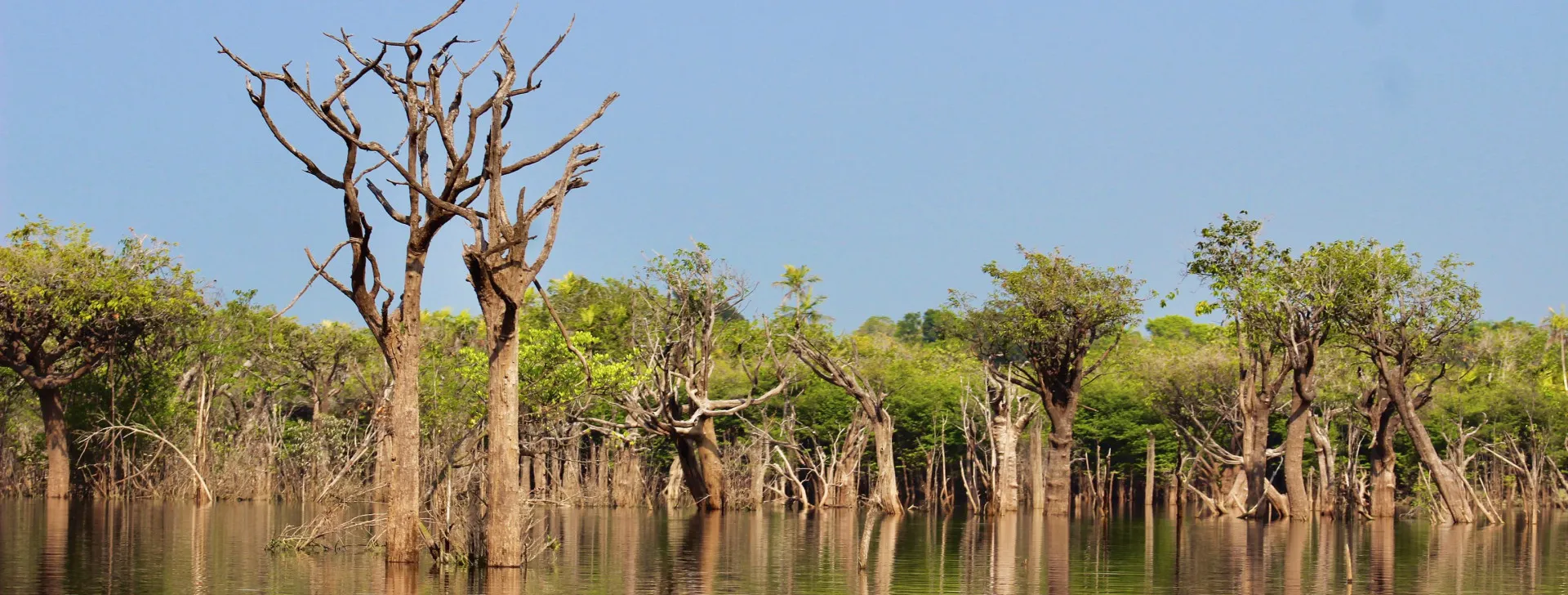COP30: Amazon wetlands sustain climate balance and global biodiversity
09 de September de 2025

Fred Santana – From Cenarium
MANAUS (AM) – With less than 5% of the planet’s continental area, the Amazon holds vast wetlands that regulate the climate and contain the world’s largest reserve of fresh water. These ecosystems, along with the so-called “flying rivers,” will be at the center of discussions at the United Nations Climate Change Conference of the Parties (COP30), which will take place from November 10 to 21 in Belém (PA).
Amazonian wetlands represent between 15% and 20% of all wetlands on the planet, according to surveys compiled by the Wetlands Ecology, Monitoring, and Sustainable Use Research Group (GP-MAUA) of the National Institute for Amazonian Research (INPA/MCTI), in partnership with national and international institutions. This set includes floodplains, igapós of clear and black waters, buriti palm groves, and campinaranas, ecosystems that reinforce the Amazon’s global dimension and provide fundamental ecosystem services, such as storing and purifying water, mitigating floods and droughts, recharging aquifers, and maintaining biogeochemical cycles.

“About 30% of the Amazon basin consists of wetlands (WAs) of different categories. These environments are true water reservoirs, playing a ‘sponge’ role in the landscape. They buffer extreme flood and drought events, shelter and generate biodiversity, among other functions. The water passing through these environments feeds the Amazon River, which discharges nearly 20% of all the planet’s fresh water into the sea,” explains Maria Teresa Fernandez Piedade, INPA researcher and specialist in Wetland Ecology.
“This water also feeds aquifers and the water table, being absorbed by plants that release it through evapotranspiration, thus forming the ‘flying rivers,’ which supply agribusiness in the Southeast and other regions. Wetlands are vital environments and must be preserved and considered in public policies,” emphasizes the researcher.
Biodiversity refuges
On the eve of COP30, which will be held in November in Belém (PA), the Amazon emerges as a key player in global climate negotiations. The conservation of its wetlands and the maintenance of flying rivers will be highlighted on the agenda, given their role not only in regional balance but also in the climate of other continents.
These environments are also biodiversity refuges and hold historical ties with human occupation in the Amazon. Many archaeological sites of Indigenous populations have been found in transition regions between flooded areas and dry land, while riverside communities developed fishing, agriculture, and forest resource management systems adjusted to the predictable flood and ebb cycles.
Jochen Schöngart, coordinator of the Long-Term Ecological Research Project (Peld-Maua), draws attention to the importance of wetlands not only as ecosystems of natural, cultural, and economic wealth for the entire region but also for the additional benefits they provide society. “Wetland landscapes provide vital ecosystem services for society and various public and private sectors, such as storing and purifying water, buffering river discharges to mitigate severe floods and droughts, recharging groundwater, as well as retaining sediments and maintaining biogeochemical cycles,” he explained.

Schöngart argues that conservation strategies must take into account the variety of fauna and flora species, their biological interactions and ecosystem functions, the services these environments offer, and also social, economic, and environmental aspects.
From the scientist’s perspective, a multi- and interdisciplinary approach is fundamental to ensure the sustainable use of these critical environments, which pose major challenges for science, Indigenous peoples, quilombolas, and traditional communities (PIQTCs), as well as for public policy-making at different levels. “Only in this way will it be possible to guide national and international actions aimed at the rational use of wetland landscapes and at adapting these ecosystems to ongoing climate change,” he emphasizes.
Amazon Day
The largest Brazilian biome and cradle of the greatest biodiversity among the world’s tropical forests, the Amazon is celebrated on September 5, the date that marks the creation of the Province of Amazonas by Emperor Dom Pedro II in 1850. With approximately 5 million km² of forest, the Amazon spans nine South American countries, with 60% of this biome located in Brazil. Present in the seven states of the North Region, as well as Maranhão and Mato Grosso, the Amazon is so vast that if it were a country, it would be the seventh largest in the world.
The world’s largest river basin is the Amazon Basin, which holds 20% of the planet’s fresh water and approximately 80% of Brazil’s surface water. Around 80% of the biome is dry land, but there are also flooded regions where different species thrive. In the Amazon, there are also seasonally flooded várzea forests, igapó forests with giant water lilies, and coastal mangroves, where brackish waters create the ideal habitat for various crustaceans. The Amazon is home to 85% of South America’s fish species, more than 400 amphibian species, 1,300 bird species, and over 400 mammals.

